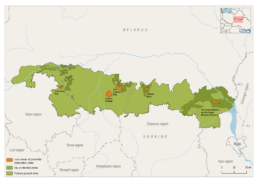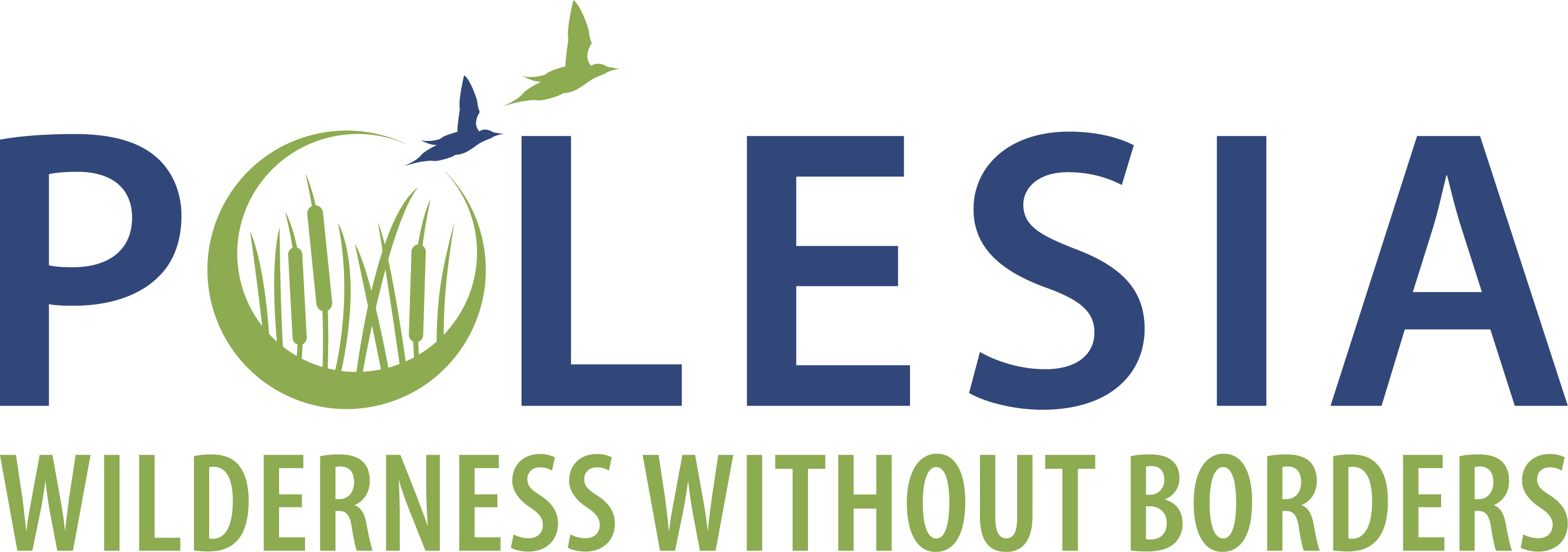Turaw Meadow
The IBA comprises a floodplain meadow with two oxbow lakes on the right bank of the Pripyat River, next to the town of Turaw. A large part of it represents an open meadow partially overgrown with shrubs and completely flooded during the spring flood season. The meadow is used for cattle and geese grazing.
The Turaw Meadow is exceptionally important for wetland birds, especially during the spring migration, when more than 200,000 waders may accumulate here at the same time, including nationally important populations of the Terek Sandpiper and Common Ringed Plover. Large masses of spring migrants stay there from several days to a week or more, depending on the flood intensity and weather conditions.
These seasonal gatherings are among the largest in Central and Eastern Europe, making the site a key location for the study and conservation of migratory wetland birds.

Country: Belarus
Area: 145.6 ha
National protection status: Nature Reserve
International protection status: IBA** (BY046) – Turaŭskaje balonnie (672 ha); Emerald Network* (BY000056) – Turovskiy Lug (145.6 ha).
* After denunciation of accession to the Bern Convention on the Conservation of European Wildlife and Natural Habitats, de jure there are no Emerald Network sites in Belarus.
**The following description relates to the IBA Turaŭskaje balonnie.
>20
rare and protected bird species registered
>200 000
waders may accumulate in the area simultaneously
30%
of the national population of the Common Ring Plover registered here


Biodiversity
More than 20 rare and protected bird species are registered in the area: 10 ones when nesting and more than 10 ones during their migration. The area is extremely important for wetland birds. The Turaw meadow is a key area for wading birds during the spring migration, when hundreds of thousand of waders migrate through the area. Up to 200,000 waders may accumulate in the area simultaneously (IBA criterion A4iii).
Besides, the area is a breeding ground of more than 10% of the national population of the Terek Sandpiper (Xenus cinereus). About 1% of the national population of the White-winged Tern (Chlidonias leucopterus) and the Black Tern (Chlidonia sniger), the Great Snipe (Gallinago media), the Black-tailed Godwit (Limosa limosa) and about 30% of the national population of the Common Ringed Plover (Charadrius hiaticula) have been registered there.
The most important impacts and threats

Meadows overgrowing with scrubs

Spring bird hunting

Transformation of the floodplain into arable land
Grassland ecosystems are threatened by overgrowing with scrubs due to abandonment of haying and grazing, conversion of floodplains to cropland, cereal cultivation, overgrazing by livestock, as well as spring and autumn burning. Damage to forest habitats and species is caused by clear-cutting, sanitary logging, deadwood removal and forest plantation, while wetland ecosystems suffer from riverbed straightening, dredging and damming. In addition, spring hunting is detrimental to waterfowl and wading birds.
Protection and conservation needs
Among the measures implemented to protect the area’s natural state are prohibition of drainage works, changes to the water flow, or mining. To give wildlife a peaceful sanctuary during their breeding season, the harvesting of hay or wild plants is forbidden from April 1st to June 15th. Furthermore, the use of fertilizers and pesticides is banned to keep the environment pure. The visitors cannot bring dogs, pitch tents, have picnics, light fires, or hunt in the nature reserve.
To make the conservation efforts more efficient, the following measures are recommended:
- Extend the protection regime to the entire territory of the IBA;
- Create a buffer zone with a ban on hunting and fishing during the nesting period.
Our activities in the area
Regular scrub clearance is carried out to restore natural habitats for a number of rare bird species. Equipment for the ringing station has been purchased and handed over.



The project “Polesia – Wilderness Without Borders” is part of the Endangered Landscapes & Seascapes Programme and is funded by Arcadia. The project is coordinated by Frankfurt Zoological Society (FZS).

